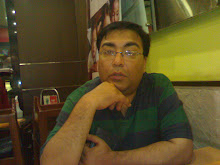It has finally begun.
A story in the New York Times last month, captioned 'Insurer Offers Option for Surgery in India' caught my eye. Rewind to the summer of 2006, when I was in New York trying to convince some of the leading health insurers to consider developing a new low premium health insurance product for the huge numbers of uninsured in the US. Everybody I met heard me out patiently but was not willing to take the plunge. I tried hard but success eluded me. Some of my colleagues consoled me by saying that maybe I am ahead of the times.
Now it seems they were right. The New York Times report says that 'the health insurer Wellpoint is testing a new program that gives covered patients the option of going to India for elective surgery, with no out of pocket medical costs and free travel for both the patient and a companion'.
This is exactly what I had in mind two years ago. The product logic is unbeatable. With close to 50 million individuals in the US either under or uninsured, a insurance cover, which covers for surgery/treatments in the best Indian hospitals is a wonderful opportunity for at least those who cannot access similar quality healthcare in the US. The product works for everyone. The insurer gets to tap into the a market segment, which could not afford its services so far, the patient gets a great shot at getting well and the Indian hospital the opportunity to expand its business.
The price differentials between a surgery/procedure in India and the same in the US are so compelling that even if one was to throw in air tickets for the patient and a companion and a week long post hospitalisation stay, enough money would be left over for everyone to be happy.The same report quotes Deloitte Centre for Health Solutions a consultancy saying that by the year 2010 6 mn Americans will be travelling abroad annually seeking medical care.
The downside, the low cost insurance product with a fulfilment option in India may lead to cannabalisation with people who could afford more expensive plans may also choose to go in for a cheaper product. I believe this fear is ill founded as only the desperate, would choose to travel half way across the world to a strange country to undergo complex surgery. In times of a medical crisis it is human nature to try to be as close as possible to ones loved ones. This product will appeal to only those who can not afford health insurance in the US.
For Indian hospitals, this may turn out to be a great beginning. The present trickle of patients can become a deluge if they handle this right. They need to improve the quality of care, raise the bar further, go in for international accreditations and roll out the proverbial red carpet. Maybe, the time has come to open facilitation centres in the US, where potential patients can interact face to face with hospital personnel, access information, connect with their surgeons over a video link and than make up their mind.
With its path breaking product Wellpoint has taken a gigantic leap and if this succeeds, I am sure other big insurers will also jump in. For the nascent Medical Travel industry, this is indeed a huge milestone.
'Insurer Offers Option for Surgery In India', New York Times/Nov 21 2008 Byline Roni Caryn Rabin







